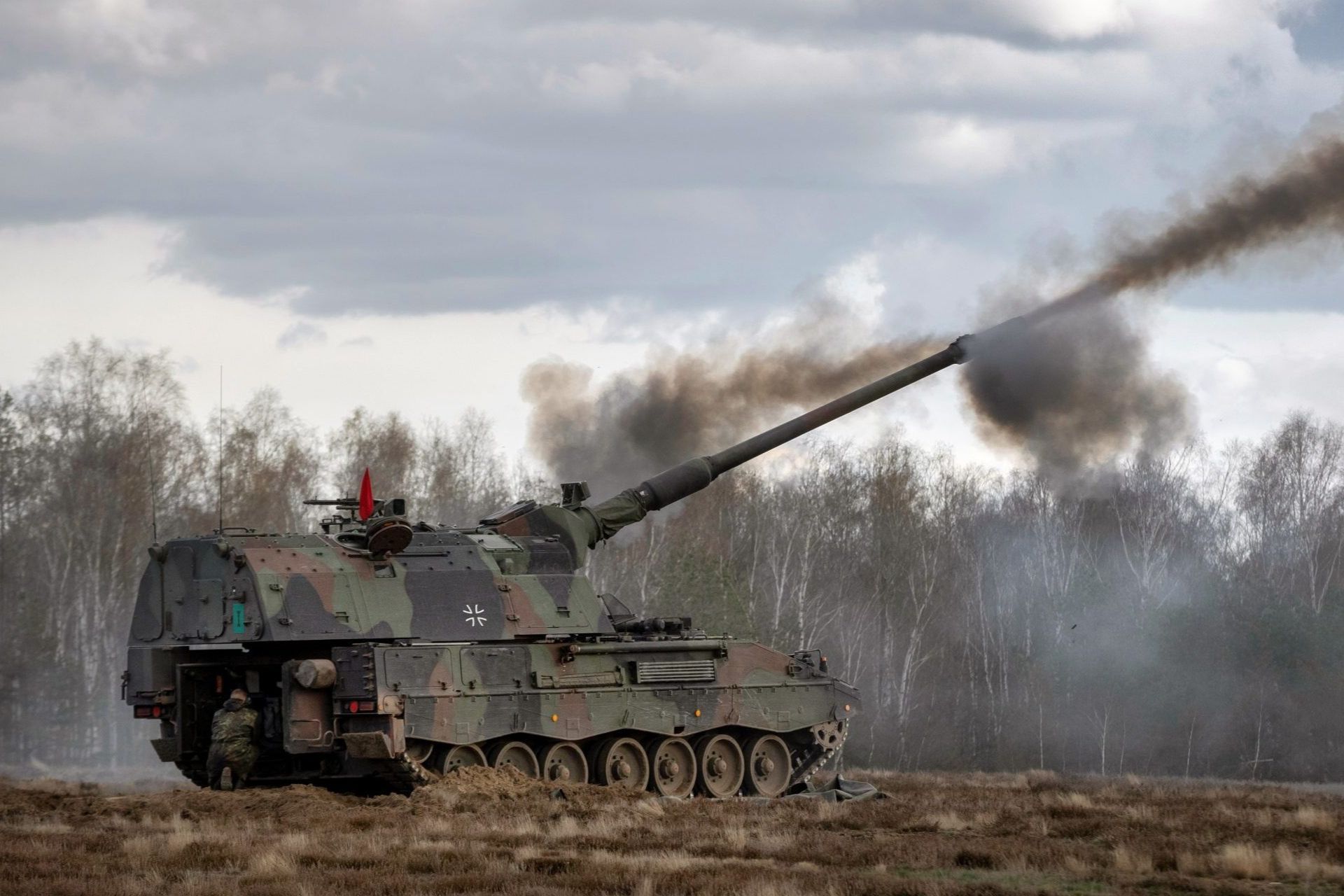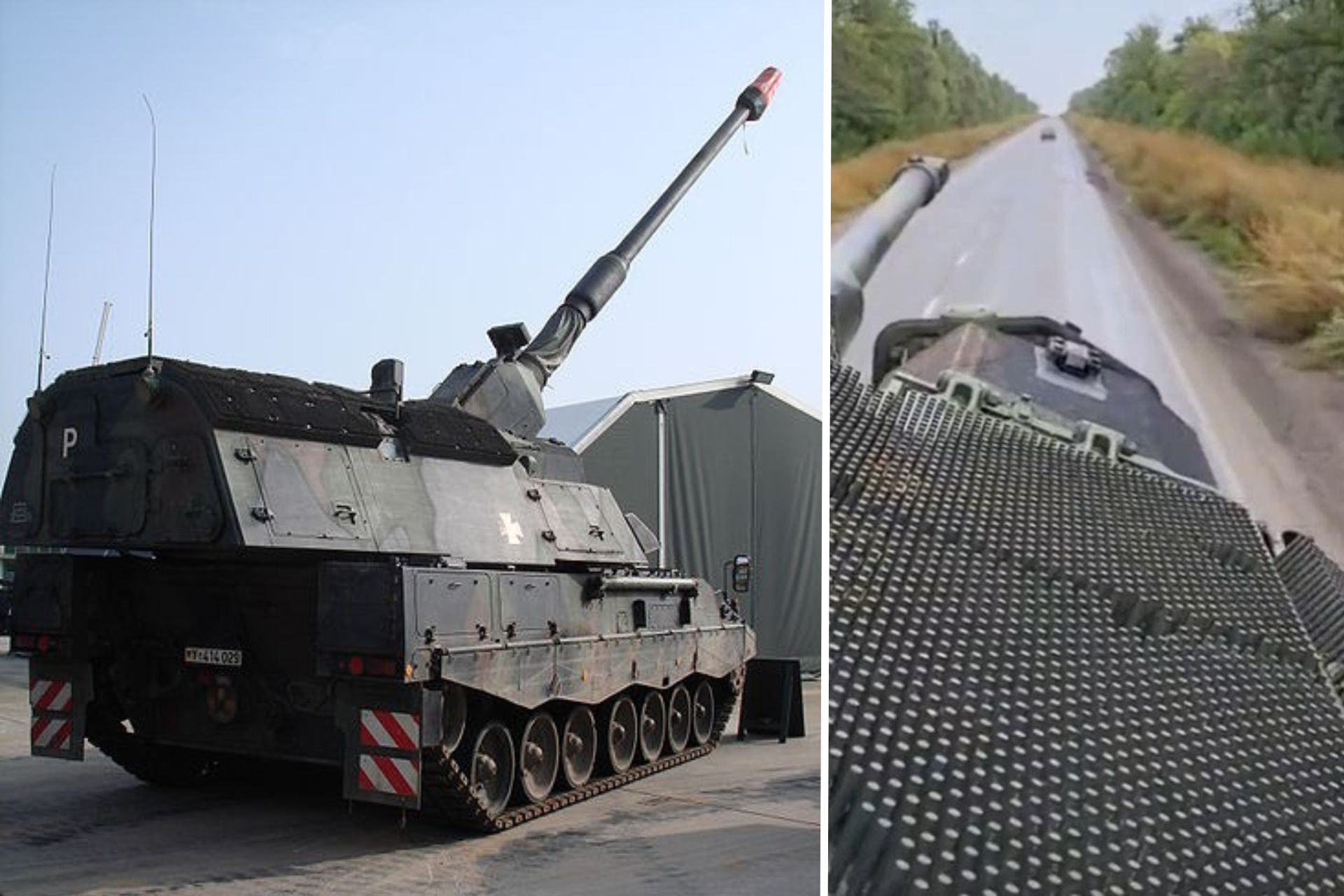Breaking News
Focus: Hedgehog Armor System - Innovative Shield Against Anti-Tank Cluster Munitions.
The modern battlefield presents increasing challenges to armored vehicles, particularly against sophisticated threats such as anti-tank cluster munitions. To counter this threat, the Hedgehog armor system, equipped on vehicles such as the PzH 2000 and the Puma IFV, represents a significant advancement in roof armor protection. This innovative system, designed to neutralize shaped-charge submunitions, has proven effective in the field, including against kamikaze drone attacks in Ukraine. Follow Army Recognition on Google News at this link

The PzH 2000, for instance, can be equipped with up to 75 panels of Hedgehog armor, offering significant coverage against attacks. (Picture source: German MoD)
The Hedgehog armor, also known as Igelpanzerung, is a roof protection system developed to counter anti-tank cluster munitions. These munitions, when deployed, release hundreds of shaped-charge submunitions capable of penetrating the thin armor of modern tanks. The Hedgehog system consists of rubber rods specifically designed to intercept and neutralize these submunitions.
The Hedgehog system is made from resilient materials like reinforced rubber. Its primary objective is to disrupt the formation of the metal jet produced by the shaped-charge submunitions, thereby preventing their penetration capability. This disruption is achieved by placing the rubber rods in the center of the submunition's conical cavity, reducing the standoff distance required for the jet to form properly.
Anti-tank cluster munitions pose a significant threat to armored vehicles due to their ability to penetrate relatively thin roof armor, often between 20 and 40 mm thick. A submunition like the M77, with a diameter of only 38 mm, can penetrate up to 200 mm of steel. Shaped charges from these submunitions create a high-velocity metal jet capable of piercing conventional armor. Cluster munitions are used by many countries to maximize impact over a wide target area.
For example, the CBU-87 Combined Effects Munition (CEM), manufactured by Textron Systems in the United States and used by several NATO countries, contains 202 versatile submunitions. The RBK-500, a Russian bomb produced by NPO Bazalt, can be equipped with anti-tank or antipersonnel submunitions. The United Kingdom uses the BL-755, containing 147 HEAT submunitions capable of penetrating modern armor. The KMGU-2, a Russian dispenser, can scatter various submunitions over a wide area. Finally, the M26 Rocket, used in the MLRS multiple launch rocket system, is manufactured by Lockheed Martin and employed by the United States and NATO allies, illustrating the diversity and lethality of these weapons.

Two PzH 2000 howitzers equipped with Hedgehog armor rubber rod mats are applied to protect against top-attack shaped-charge munitions (Picture source: Wikimedia/Ukrainian MoD)
The Hedgehog armor uses a series of 60 mm diameter rubber rods to intercept shaped-charge submunitions. When these rods are positioned in the center of the submunition's conical cavity, they reduce the standoff distance between the charge and the armor, thereby disrupting the formation of the metal jet. This prevents the jet from forming correctly, neutralizing the penetrating effect of the shaped charge. This principle has been demonstrated in tests where the rubber rods showed remarkable effectiveness in stopping the formation of the metal jet.
The Panzerhaubitze 2000 (PzH 2000) is a 155 mm self-propelled howitzer developed by Krauss-Maffei Wegmann (KMW) and Rheinmetall. Entering service in 1998, it is known for its firepower and precision, with a maximum range of 67 kilometers using specific munitions. The PzH 2000 features an automatic loading system capable of firing up to 10 rounds per minute. Germany, the Netherlands, Italy, and Greece are among the users, with approximately 428 units in service. This system is particularly valued for its advanced protection, including separate compartments for ammunition and crew, and blast vents to dissipate internal explosions.
The Schützenpanzer Puma is an infantry fighting vehicle developed by KMW and Rheinmetall, entering service in 2015. Intended to replace the Marder, it offers a combination of mobility, protection, and firepower. The Puma is equipped with a 30 mm automatic cannon, a coaxial machine gun, and can launch anti-tank missiles. Its advanced protection includes modular armor and active defense systems. Germany has ordered 350 units. The Puma is designed to operate alongside main battle tanks, providing enhanced protection to infantry against modern threats, including improvised explosives and drones.

Overview of damage with the Hedgehog armor of a Ukrainian PzH 2000 155 mm self-propelled howitzer damaged by a Russian Army Lancet-3 (right). (Picture source: Ukrainian MoD/Zala Aero Group)
Both vehicles have adopted the Hedgehog armor system to enhance their protection against anti-tank submunitions. The PzH 2000, for instance, can be equipped with up to 75 panels of Hedgehog armor, offering significant coverage against attacks. In Ukraine, a PzH 2000 survived a Russian Lancet-3 kamikaze drone attack thanks to this armor. The rubber rods disrupted the explosion, preventing penetration of the hull and protecting the vehicle's crew and internal systems.
In addition to protection against submunitions, the Hedgehog system has proven effective against loitering munitions such as kamikaze drones. These drones, like the Lancet-3 used by Russia, pose a growing threat due to their ability to target and destroy precision artillery units. Although the Lancet-3 carries a relatively small warhead, its ability to search for and destroy moving targets makes it a formidable weapon. The Hedgehog armor provides a practical solution to counter these threats, allowing armored vehicles to remain operational despite attacks.
Other armies worldwide also use various systems to protect their armored vehicles against cluster munitions. For example, the Trophy active protection system, developed by the Israeli company Rafael Advanced Defense Systems, uses radars and projectiles to intercept and destroy incoming munitions before they reach the vehicle. The United States has also invested in reactive armor systems and add-on armor kits for their vehicles, aiming to increase resilience against submunitions and other threats.
The development and adoption of armor systems like the Hedgehog represent a significant advancement in the protection of modern armored vehicles. As battlefield threats evolve, particularly with the increased use of drones and loitering munitions, these innovations play a crucial role in ensuring the survival of units and maintaining operational effectiveness. As these threats become more common, the ability to install modular armor in the field offers a cost-effective method to improve vehicle and crew survival, reminiscent of the deployment of MRAP vehicles by the U.S. military in response to IEDs in Iraq and Afghanistan.


























